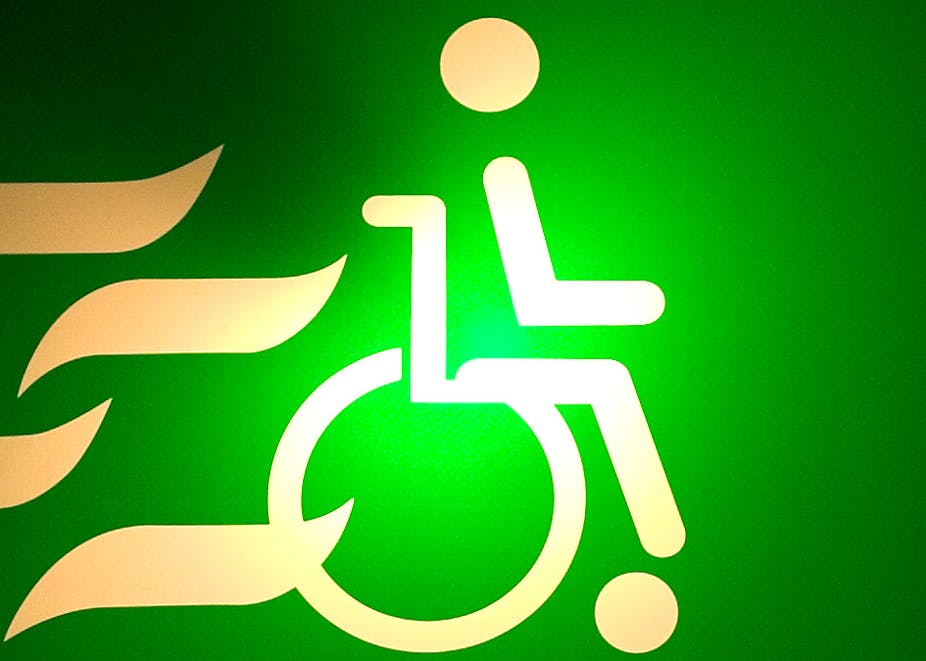When bushfires start, no one should be more worried than people with disabilities. Recent research shows people with disabilities are twice as likely to die or be injured than the general population during a disaster. They are also less likely to receive aid and less likely to recover in the long-term.
Jo Ragen, a senior research associate at the University of Sydney, describes her experience of a bushfire evacuation in the 1994 fires along Australia’s eastern seaboard:
We had over 100 young people with physical disabilities at a recreational camp, and I told the [State Emergency Service] we can’t be leaving on trucks. Even though they thought we had enough time to get out, in the end, that’s what happened: young people were loaded onto the back of trucks and utes and we left behind what was really essential equipment for those being evacuated – wheelchairs, ventilators.
It taught me that people with disabilities need to be involved right from the planning stage. Thinking that someone is going to turn up and ‘rescue’ a person with a disability means someone is going to be forgotten and a catastrophic outcome is real.
As Australian authorities urge the general community to prepare and plan for bushfires, the early warning systems and public awareness campaigns are often failing to consider the needs of persons with disabilities.
Advice on the ground specifically for people with disabilities is pretty slim, and for bushfires is centred on the message of “leave early”. But recent research by the Bushfire Collaborative Research Centre finds many people instead choose the “wait and see” option. In fact, less than 1% would leave their house on days of extreme or catastrophic fire danger.
This may be compounded for a person with a disability, as leaving early can be difficult as it means leaving behind essential equipment at home that is needed for daily living.
How we could be better prepared
For people with disabilities, significant gaps exist in current approaches to bushfire risk reduction.
Communications about bushfire preparedness are often not in accessible formats. There are assumptions that people with disabilities are living in households dependent on others, when many are either living independently or are heads of households.
As Jo Ragen says:
Plans that lump all people with disabilities together are like plans that say ‘all people with blond hair must do this in a bushfire’. In my experience, when you wait for others to plan, or think someone else will evacuate you, you’ll either get evacuated in a way that is not safe or appropriate, or you’ll get left behind.
There are various measures being done to improve this situation in Australia.
For example, a recent report on “Increasing the Resilience of the Deaf Community in NSW to natural hazards” found that while none of the natural hazard preparedness programs or tools cater specifically to deaf people, there were communication tools that could be considered “deaf-friendly” or required only small alterations.
A recent United Nations survey consulted nearly 6,000 people with disabilities in 126 countries, and found a high proportion of people with disabilities die or suffer injuries during disasters because they are rarely consulted about their needs and governments lack adequate measures to address them.
In cases where they need to evacuate - such as during floods or earthquakes - only 20% of respondents said they could evacuate immediately without difficulty, 6% said they would not be able to evacuate at all, and the remainder said they would be able to evacuate with a degree of difficulty.
So where does that leave Australians during what is proving to be another dangerous bushfire season?
The only way we will ensure that no one is left behind is if people with disabilities are actively included in the consultation, planning and preparedness stages of thinking about disasters. Specific input and ideas from people with disabilities is essential for identifying risks and increasing the chance of survival if disaster does strike.

